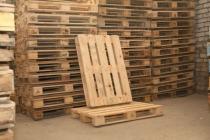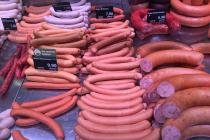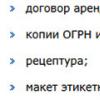In order to implement the provisions of the Customs Code Russian Federation(Sobraniye zakonodatelstva Rossiyskoy Federatsii, 2003, N 22, item 2066) order:
1. Approve the Regulations on the procedure for creating and designating zones customs control(hereinafter - the Regulation) and samples of the sign for designating the customs control zone and protective tape (Appendices 1 - 3).
2. Heads of regional customs departments, customs offices to take measures to create and designate customs control zones in accordance with the approved region of activity customs authority and the requirements of the regulation.
3. The Main Directorate of Organization of Customs Control (A.V. Galaktionov) to exercise control over the creation of customs control zones.
4. Heads of customs authorities to ensure control over the creation, designation and liquidation of customs control zones in accordance with the Regulations.
5. Recognize invalid the order of the State Customs Committee of Russia dated July 13, 2000 N 594 "On approval of the Regulations on the procedure for the creation and designation of customs control zones" (registered by the Ministry of Justice of Russia on August 14, 2000, reg. N 2354).
6. Deputy Chairman of the State Customs Committee of Russia V.V. Shpagin to control the execution of this order.
Chairman of the Committee
valid
state councilor
customs service
Russian Federation
M. Vanin
Annex 1
Regulations on the procedure for creating and designating zones
customs control
I. Procedure for establishing customs control zones
1. present order includes the procedure for the adoption by the customs authority of a decision on the creation of a customs control zone for the purpose of conducting customs control in the forms of customs inspection and customs inspection of goods and Vehicle, their storage and movement under customs supervision, determination and designation of its limits and places of crossing its borders by persons, goods and vehicles, as well as the procedure for canceling the decision to create a customs control zone.
2. Customs control zones may be permanent or temporary.
Permanent customs control zones are created in the places where goods subject to customs control are regularly located:
a) on the territory of checkpoints across the State Border of the Russian Federation;
b) along customs border Russian Federation;
c) in other places determined in accordance with the Customs Code of the Russian Federation (Collected Legislation of the Russian Federation, 2003, No. 22,
3. Permanent zones of customs control are also designated in accordance with the Regulations the location of goods and vehicles, which, in accordance with the Code, are zones of customs control.
4. The decision to create permanent customs control zones located along the customs border of the Russian Federation is formalized by the regulatory legal acts of the State Customs Committee of Russia in accordance with Decree of the Government of the Russian Federation of October 14, 2003 N 624 "On the procedure for creating customs control zones along the customs border" (Collection of Legislation Russian Federation, 2003,
No. 42, art. 4074).
In other cases, the decision to create a permanent customs control zone is made by the head of the customs office (a person replacing him), in the region of activity of which there are places and territories where permanent customs control zones are created.
5. The decision to create a permanent customs control zone is formalized by an order of the customs office in the region of operation of which the permanent customs control zone being created is located.
The order on the establishment of a permanent customs control zone must specify:
a) the basis and purpose of creation;
b) location;
c) the limits and places of their crossing by persons, goods and vehicles;
d) means used for designation;
e) information about the person who has the authority in relation to the goods and (or) in whose possession the premises and (or) open areas are located, intended for committing customs operations, storage of goods and vehicles without placing them in a temporary storage warehouse.
The annex to the order must contain a graphical representation of the limits and territory of the permanent customs control zone in the form of plans or maps.
A copy of the order on the creation of a permanent customs control zone shall be sent to the interested person within 3 days from the date of signing.
6. The decision to establish a temporary customs control zone shall be made by the head of the customs authority (a person replacing him) on the basis of a report by an official of the customs authority on the need to create a temporary customs control zone, indicating in it the reasons and purpose of creation, the period for which it is necessary to create it.
7. The decision to create a temporary zone of customs control is formalized by an order (instruction) of the customs authority in the region of activity of which the specified zone is located.
The order (instruction) on the establishment of a temporary zone of customs control must contain:
a) the basis and purpose of creation;
b) the date of creation and the period for which it is created;
c) numbers and dates of documents issued by authorized officials customs authorities, if a temporary zone of customs control is created on the basis of these documents;
d) information about the person who has the authority in relation to the goods and (or) in whose possession the premises and (or) open areas are located, where customs inspection, customs inspection of goods and vehicles are carried out, customs operations are allowed, temporary storage of goods within the created temporary zone of customs control;
e) location;
f) the limits and places of their crossing by persons, goods and vehicles;
g) used means of designation.
A copy of the order (instruction) on the establishment of a temporary customs control zone shall be sent to the person concerned on the day of its signing.
II. The procedure for designating customs control zones
8. The limits of the customs control zone are marked with rectangular signs, on a green background of which an inscription in Russian and English respectively - "Customs control zone" and "Customs control zone". These signs are the main means of designating the customs control zone.
The zone of customs control can be marked by drawing the inscription "Customs control zone" ("Customs control zone") directly on the protective structures and walls of the premises that make up its perimeter.
It is allowed to replace the inscription in English with an inscription in any other language that is appropriate for use when creating a specific customs control zone.
9. Signs for designating customs control zones, installed on motor roads, are made in the prescribed manner.
10. The designation of the customs control zone is carried out along its limits at the places of intersection with transport routes, at the places of crossing the customs border by persons, goods and vehicles. When designating a customs control zone, boards may additionally be used with information about its specific limits, about the established places for crossing its border, about the list of persons having access to it, about the means of marking it, and about other circumstances related to its functioning.
11. The designation of a permanent customs control zone is carried out after a decision on its creation is made, as well as in cases where, in accordance with the Code, the locations of goods and vehicles are customs control zones.
12. The procedure for designating permanent zones of customs control along the customs border of the Russian Federation and the location of index signs when designating them are determined by other regulatory legal acts of the State Customs Committee of Russia.
13. The limits of the temporary zone of customs control may be marked with protective tape, as well as temporarily installed signs. In this case, the use of improvised materials and means is allowed.
14. Designation of the temporary zone of customs control is made after the decision on its creation.
III. Cancellation of the decision to create customs control zones
15. The decision to create a customs control zone shall be canceled in the event of a change in the location of the customs authority, the closure of a checkpoint across the State Border of the Russian Federation, a change in the place of storage of goods under customs control, a change in the place where customs operations are allowed, termination of the grounds according to which the allocation and designation of a part of the customs territory of the Russian Federation is required for the purpose of conducting customs control in the forms of customs inspection and customs examination of goods and vehicles, their storage and movement under customs supervision.
Cancellation of the decision to create a customs control zone entails its liquidation.
16. The customs authority, after the liquidation of the customs control zone located in the region of its activity, takes measures to remove the means of its designation and inform stakeholders about its liquidation.
17. Permanent customs control zones, which are premises and (or) open areas intended for use as temporary storage warehouses, the territory adjacent to them and specially equipped for parking vehicles transporting goods under customs control, customs warehouses, duty-free shops are liquidated in the event of the exclusion of the relevant legal entities from the Register of Owners of Temporary Storage Warehouses (Article 114 of the Code), the Register of Owners of Customs Warehouses (Article 232 of the Code) in accordance with the established procedure, as well as the closure of a duty-free shop (Article 263 of the Code).
18. The decision to liquidate the permanent customs control zone established in accordance with paragraph 2 of the Regulations shall be issued in the form of a customs order, except for the cases of liquidation of the permanent customs control zone established along the customs border of the Russian Federation.
19. The temporary customs control zone shall be liquidated upon completion of the measures that served as the basis for its creation, or upon the expiration of its validity period specified in the order (instruction) of the customs authority on the creation of a temporary customs control zone.
Customs control zone - this is a specially allocated and designated part of the customs territory of the Russian Federation, created for the purpose of exercising customs control and ensuring compliance with the customs legislation of the Russian Federation.
Customs control zones may be created along the customs border of the Russian Federation, in places customs clearance, location of customs authorities and other places determined by the regulatory legal acts of the State Customs Committee of Russia. Without fail, customs control zones are created at checkpoints across the State Border of the Russian Federation and at places where goods and vehicles cross the customs border of the Russian Federation.
When creating free customs zones, when issuing licenses by customs authorities for the establishment of temporary storage warehouses, customs warehouses, free warehouses and duty-free shops, the territories of free customs zones, the territories and premises of these warehouses and duty-free shops acquire the status of customs control zones.
Customs control zones can be established on a permanent or temporary basis and, depending on this, be permanent or temporary. Permanent customs control zones are created at places of customs clearance, at places where goods and vehicles cross the customs border of the Russian Federation, at checkpoints across the State Border of the Russian Federation, at locations of customs authorities, as well as along the customs border of the Russian Federation. Territories and premises of temporary storage warehouses, customs warehouses, duty-free shops, free warehouses and territories of free customs zones are also permanent customs control zones.
Temporary customs control zones are created on the territories, in premises, on vehicles (including sea and aircraft, railway trains), where goods and vehicles subject to customs control are located or may be located, if during such control it is required to determine the customs control zone, based on the need to ensure the safety of such goods and vehicles, as well as the unhindered exercise of their functions by customs authorities.
The limits of the permanent customs control zone are marked with rectangular signs, on a green background of which there is an inscription in Russian and English in white "Customs control zone". The limits of the temporary zone of customs control may be marked with fencing tape, temporarily installed indicator boards, scoreboards, and other information indicators. In this case, the use of improvised materials and means is allowed. Oral notification is also possible.
Implementation of production and other commercial activities, movement of goods, vehicles, persons, including officials of other state bodies, across the borders of customs control zones and within them is allowed only with the permission of the customs authorities of the Russian Federation and under their control, except for a number of cases provided for by law. Access to the customs control zones is permitted with prior notice to the customs authorities of the Russian Federation.
Violation of the regime of the customs control zone is a violation customs regulations and entails administrative liability under Art. 16.5 of the Code of Administrative Offenses of the Russian Federation.
| Previous |
Customs control zones
Customs control zones are places where goods are transported across the customs border, areas of warehouses, duty-free shops and other places that are determined by law.
Customs control zones can be permanent if they are permanently located in the same place and temporary if they are moved.
The procedure for establishing customs control zones is controlled by the state.
Customs control zones can be established on a permanent or temporary basis and, depending on this, be permanent or temporary.
A customs control zone is considered permanent when goods subject to customs control are regularly located on its territory. Temporary customs control zones are created for the duration of customs control, cargo and other operations.
Transportation of goods, vehicles, persons, including officials of other government agencies, across the borders of customs control zones and within them is allowed with the permission of the customs authorities and under their supervision. The Federal Customs Service, on the basis of a proposal from the customs authority whose region of operation includes the corresponding section of the territory of the Russian Federation, determines the sections of the State Border along which it is necessary to create customs control zones, and makes a decision on the creation of such zones.
The boundaries of the customs control zone are marked with rectangular signs, on a green background of which the inscription in Russian and English "Customs control zone" is made in white. According to the legislation of the Russian Federation, a temporary control zone may be created by decision of the head of the customs post. The said decision shall be drawn up by order of the head of the customs post indicating the purpose of creating a temporary customs control zone, the location of the temporary customs control zone, the period of validity, the border and places of its crossing by persons, goods and vehicles, as well as the marking means used. The border of the temporary zone of customs control may be marked with protective tape, as well as temporarily installed certain signs. The limits of the customs control zone are indicated by rectangular signs, on a green background of which there is an inscription in Russian and English in white, respectively: "Customs control zone" and "Customs control zone". These signs are the main means of designating the customs control zone. The customs control zone can be marked with the words "Customs control zone"
Forms of customs control
Forms of customs control are categories of verification actions of customs authorities aimed at the implementation of customs control.
There are various separate forms of customs control.
Verification of documents and information is a form of customs control, in which an official of the customs authority checks the correctness of the truthfulness of the information, the originality of the documents and the correctness of filling out these documents. Chapter 16 of the Customs Code is devoted to the forms and procedure for conducting customs control. In particular Art. 110 defines the following forms of customs control:
Checking documents and information.
In this form of customs control, there are three purposes of verification: establishing the originality of the documents being checked by the customs official, verifying the veracity of the information in these documents and establishing the correctness
Oral survey.
In an oral survey, persons transporting goods are asked questions in the course of customs clearance of goods
Get an explanation.
This is a collection of information about the circumstances that are important for customs control. In this case, people who are related to the movement of goods across the border and who have the necessary data are interviewed. Inspectors apply not only to declarants, but also to other persons. Obtaining explanations in its content is similar to an oral survey. The main difference is the written execution of explanations in the form approved by the federal executive body authorized in the field of customs affairs. In addition, the provisions of the Customs Code of the Customs Union do not establish restrictions on the use of this form of customs control at the stage of customs clearance or verification after the release of goods and vehicles.
Customs supervision is public, targeted, systematic or one-time, possibly using technical means, monitoring the transportation of goods under customs control, performing other operations with them. The purpose of separating customs supervision is to strengthen control over compliance with the customs legislation of the Russian Federation in relation to goods under customs control, including at the stage of their transportation, storage, cargo and other operations with them. Customs supervision is carried out on a public basis, which is one of the main characteristics of this form of customs control. In addition, customs supervision is carried out purposefully, in accordance with the decision taken by an authorized official of the customs authority. By type, customs supervision can be systematic or one-time, direct (carried out personally by an official of the customs authority) and indirect (carried out using technical means).
Customs inspection of goods and vehicles.
External inspection of goods by customs, luggage of individuals, vehicles, cargo containers, customs seals, seals and other means of identifying goods.
Customs inspection.
Inspection of goods and vehicles associated with the removal of seals, seals and other means of identification of goods, opening the package.
Personal inspection.
It contains all the necessary guarantees of observance of human and civil rights, enshrined in the Constitution of the Russian Federation, including the right to protect the dignity of the individual by the state. A personal search can be carried out in relation to individuals only if certain circumstances coincide at the same time, and individual follows the State Border of the Russian Federation, the specified person is in the customs control zone or the transit zone of an airport open to international traffic, there are grounds to suspect that this person hides with him and voluntarily does not give out goods that are prohibited, respectively, for import into the customs territory of the Russian Federation and export from this territory or transported in violation of the procedure.
Only if the indicated circumstances coincide, the head of the customs authority or the person replacing him may decide to conduct a personal search of such a person. This establishes mandatory requirement O writing such a decision.
Checking the labeling, the presence of identification marks on goods is a check of the presence on goods or their packaging of special marks, identification marks or other means of marking goods used to confirm the legality of their import into Russia.
Inspection of premises and territory. Inspection of premises and territories to confirm the presence of goods and vehicles under customs control, including those conditionally released. Inspection is carried out at temporary storage warehouses, customs warehouses, in the premises of a duty-free shop, as well as at persons who must have goods in accordance with the conditions of customs procedures or customs regimes. Inspection of premises and territories is carried out to confirm the presence of goods and vehicles under customs control, including those conditionally released, in temporary storage warehouses, customs warehouses, in the premises of a duty-free shop, as well as with persons who must have goods in accordance with with the terms of customs procedures or customs regimes provided for by the Customs Code of the Customs Union.
There are two grounds for conducting an inspection of premises and territories, namely, the availability of information about the loss of goods and (or) vehicles, their alienation or their disposal in any other way or their use in violation of the requirements and conditions established by the Customs Code of the Customs Union; conducting random checks.
Accounting for goods under customs control.
Checking the system of accounting for goods and reporting is carried out in relation to persons carrying out activities in the field of customs, using special simplifications, as well as using and (or) owning foreign goods
Customs checks.
They are held by the customs authority of a Member State customs union created and registered in accordance with the laws of this member state of the customs union.
Thus, customs audits are carried out for the following categories of persons:
Declarants;
Persons carrying out activities in the field of customs;
Persons engaged in wholesale and retail imported goods;
Participants in foreign economic activity.
Art. 122 of the Customs Code of the Customs Union establishes that during a customs check, the customs authorities check:
The fact of placing goods under the customs procedure;
The accuracy of the information provided in customs declaration and other documents submitted during the customs declaration of goods that influenced the decision to release goods;
Compliance with restrictions on the use and disposal of conditionally released goods;
Compliance with the requirements established by the customs legislation of the customs union and the legislation of the states - members of the customs union, to persons carrying out activities in the field of customs;
Compliance of persons, including those carrying out activities in the field of customs, with the established criteria necessary for assigning the status of an authorized economic operator;
Other directions determined by the customs legislation of the customs union and the legislation of the member states of the customs union.
Thus, the comprehensive implementation of the forms used by the customs authorities in order to verify compliance by persons with the requirements of the customs legislation of the Russian Federation, other legislation of the Russian Federation and international treaties of the Russian Federation, the control over the execution of which is entrusted to the customs authorities of the Russian Federation, will allow to form modern system ensuring the interests of the state in the field of customs, to effectively counter threats to the security of the Russian Federation, solve social and economic problems, create favorable conditions for the activities of trade communities, individuals and legal entities.
What are customs control zones and why are they needed? Customs control of goods takes place in accordance with the code of the country that carries it out. Customs control is carried out by the customs authorities in the places of control or locations where goods are located that cross the border.What are customs control zones?
The control zone is the territory that goods transported across the Russian border must pass. As a rule, zones are designed directly in order to store goods for some time and carry out actions on them. It is in these areas that the inspection, search and actions required by law should be carried out. However, there are a number of actions performed without the organization of control zones by customs authorities. This is, for example:- Inspections that goods undergo as part of an on-site customs inspection or when a means of transport stops.
- Customs inspections carried out during the on-site inspection.
Where do these zones form?
As a rule, legislation clearly regulates the formation of customs control zones. They can be created:- Right next to the US border.
- Where customs clearance takes place.
- Where goods are reloaded, cleared and inspected.
- Where goods are temporarily stored.
- Where there is a stop and idle time of vehicles that transport goods that, in accordance with the law, are subject to customs control.
- In other territories as determined by law.
Temporary zones of control by customs authorities
To create a zone of non-permanent action, it is extremely important to obtain a decision on this, issued in writing. It must belong to the head of the customs authority. Reasons for such a decision may be:- The production of customs control is not in places that are intended for this.
- If it is necessary to conduct an inspection or inspection of goods that were found by customs officers outside the areas of control actions carried out by customs authorities.
Permanent control zones
ZTK are premises or open areas that make it possible to produce all necessary actions. Such zones, as a rule, should be marked with special marks - signs that are green. They are inscribed in shades of white in two languages, which defines the territory. In a situation where the zone has on its territory a large number of fences, rooms and walls, the message that the territory has the status of a customs control zone should be duplicated on them too.Permanent and temporary zones of customs control.
Customs control zones can be of two types:
Permanent and
Temporary.
Permanent customs control zones
created in cases of regular presence in them of goods subject to customs control (places of arrival of goods and vehicles on the customs territory, temporary storage warehouses, customs warehouses, premises of a duty-free shop).
The decision to create permanent customs control zones located along the customs border of the Russian Federation is formalized by regulatory legal acts of the federal executive body authorized in the area of customs affairs.
In other cases, the decision to create a permanent zone of customs control is made by the head of the customs office (in the form of an order), in the region of operation of which the places and territories where permanent zones of customs control are located are located.
Temporary customs control zones may be created on the basis of a written decision of the head of the customs authority (for example, the head of the customs post):
When performing customs clearance outside the places established for this (for the period of customs operations);
The limits of the permanent zone of customs control are indicated by rectangular signs with the inscription on a green background "Customs control zone" in Russian and English "Custom control zone" 2. The limits of the temporary zone of customs control may be marked with protective tape, sign boards, scoreboards or other information signs. In case of non-compliance by persons with the requirements established by the customs legislation, administrative liability may arise in accordance with Art. 16.5 KRFoAP "Violation of the regime of the customs control zone".
Temporary customs control zones may be created:
A) for the production of customs clearance of goods and transport
funds outside the places of customs operations - for the time of their performance, if
when performing such operations, it is required to determine the customs control zone
based on the need to ensure the smooth implementation
customs authorities of their functions;
B) if it is necessary to carry out inspection or examination of goods of vehicles found by customs authorities outside the permanent zones
customs control.
The decision to create a temporary zone of customs control is made by the head of the customs body or a person replacing him in writing.
Customs control zones can be permanent in cases of regular presence of goods subject to customs control in them, or temporary.
Permanent customs control zones are created at places of customs clearance, at places where goods and vehicles cross the customs border of the Russian Federation, at checkpoints across the state border of the Russian Federation, at locations of customs authorities, as well as along the customs border of the Russian Federation.
Temporary customs control zones are created in territories, on premises, on vehicles (including ships and aircraft, railway trains) where goods and vehicles subject to customs control are located or may be located, if during such control it is required to determine a customs zone control, based on the need to ensure the safety of such goods and vehicles, as well as the unhindered exercise of their functions by the customs authorities.
Temporary customs control zones can be created 5:
For the production of customs clearance of goods and vehicles outside the places of customs operations (Article 406 of the Code) - for the time of their performance, if during the performance of such operations it is required to determine the customs control zone based on the need to ensure the unhindered exercise of their functions by customs authorities;
If necessary, the inspection or examination of goods and vehicles found by customs authorities outside the permanent zones of customs control.
Procedure for establishing permanent customs control zones located along the customs border of the Russian Federation
Along the customs border, customs control zones are created in the manner determined by the Government of the Russian Federation
The Government of the Russian Federation has established the following procedure for creating customs control zones along the customs border in the Russian Federation:
1. Customs control zones are created along the customs border, regardless of its coincidence or non-coincidence with the line of the state border of the Russian Federation.
2. The Federal Customs Service of the Russian Federation determines the sections of the customs border along which it is necessary to create customs control zones, and makes a decision on the creation of such zones. The decision to create customs control zones is formalized by a regulatory legal act Federal Customs Service of the Russian Federation, agreed with Federal Service security of the Russian Federation and by the executive authorities of the constituent entities of the Russian Federation, on whose territory these zones are created.
3. On the land section of the customs territory of the Russian Federation, a customs control zone may be created within a strip of terrain up to 30 kilometers wide from the customs border line deep into the territory of the Russian Federation.
4. A customs control zone along the customs border of the special economic zones operating on the territory of the Russian Federation shall be created along both sides of the land section of the customs border that does not coincide with the state border of the Russian Federation.
5. On river and lake sections, a customs control zone may be created within the Russian part of the waters of border rivers, lakes and other water bodies, as well as a strip
areas up to 15 kilometers wide from the coastline deep into the territory of the Russian Federation.
6. In offshore sections, a customs control zone may be created within the territorial sea of the Russian Federation, with the exception of offshore sections around artificial islands, installations and structures located in the exclusive economic zone of the Russian Federation and on the continental shelf of the Russian Federation, over which the Russian Federation exercises jurisdiction in accordance with with the legislation of the Russian Federation. The customs control zone in such areas is created within the territory of the said artificial islands, installations and structures.
The procedure for creating a temporary zone of customs control
The decision to create a temporary zone of customs control is made by the head of the customs body (a person replacing him) on the basis of a report by an official of the customs body on the need to create a temporary zone of customs control, indicating in it the reasons and purpose of creation, the period for which it is necessary to create it.
The decision to create a temporary zone of customs control is formalized by an order (instruction) of the customs authority in the region of activity of which the specified zone is located.
The order (instruction) on the establishment of a temporary zone of customs control must contain:
Foundation and purpose of creation;
The date of creation and the period for which it is created;
Numbers and dates of documents drawn up by authorized officials of the customs authorities, if the temporary customs control zone is created on the basis of these documents;
Information about the person who has the authority in relation to the goods and (or) in whose possession the premises and (or) open areas are located, where customs inspection, customs inspection of goods and vehicles are carried out, customs operations are allowed, temporary storage of goods within the created temporary customs control zones;
Location;
Limits and places of their crossing by persons, goods and vehicles;
Applied means of designation.
A copy of the order (instruction) on the establishment of a temporary customs control zone shall be sent to the person concerned on the day of its signing.
Cancellation of the decision to create customs control zones
The decision to create a customs control zone is canceled in cases of a change in the location of the customs authority, the closure of a checkpoint across the State Border of the Russian Federation, a change in the place of storage of goods under customs control, a change in the place where customs operations are allowed, termination of the grounds for requiring allocation and designation of a part of the customs territory of the Russian Federation for the purpose of conducting customs control in the forms of customs inspection and customs examination of goods and vehicles, their storage and movement under customs supervision.
Cancellation of the decision to create a customs control zone entails its liquidation. The customs authority after the liquidation of the customs control zone located in the region of its activity, takes measures to remove the means of its designation and inform interested parties about its liquidation.
Permanent customs control zones, which are premises and (or) open areas intended for use as temporary storage warehouses, the territory adjacent to them and specially equipped for the parking of vehicles transporting goods under customs control, customs warehouses, duty-free shops trade are liquidated in the event of exclusion of the relevant legal entities from the Register of Owners of Temporary Storage Warehouses (Article 114 of the Code), the Register of Owners of Customs Warehouses (Article 232 of the Code) in accordance with the established procedure, as well as the closure of the duty-free shop (Article 263 of the Code).
The decision to liquidate a permanent customs control zone is issued in the form of a customs order, except for cases of liquidation of a permanent customs control zone created along the customs border of the Russian Federation.
The temporary customs control zone shall be liquidated upon completion of the measures that served as the basis for its creation, or upon the expiration of its validity period specified in the order (instruction) of the customs authority on the creation of a temporary customs control zone.














